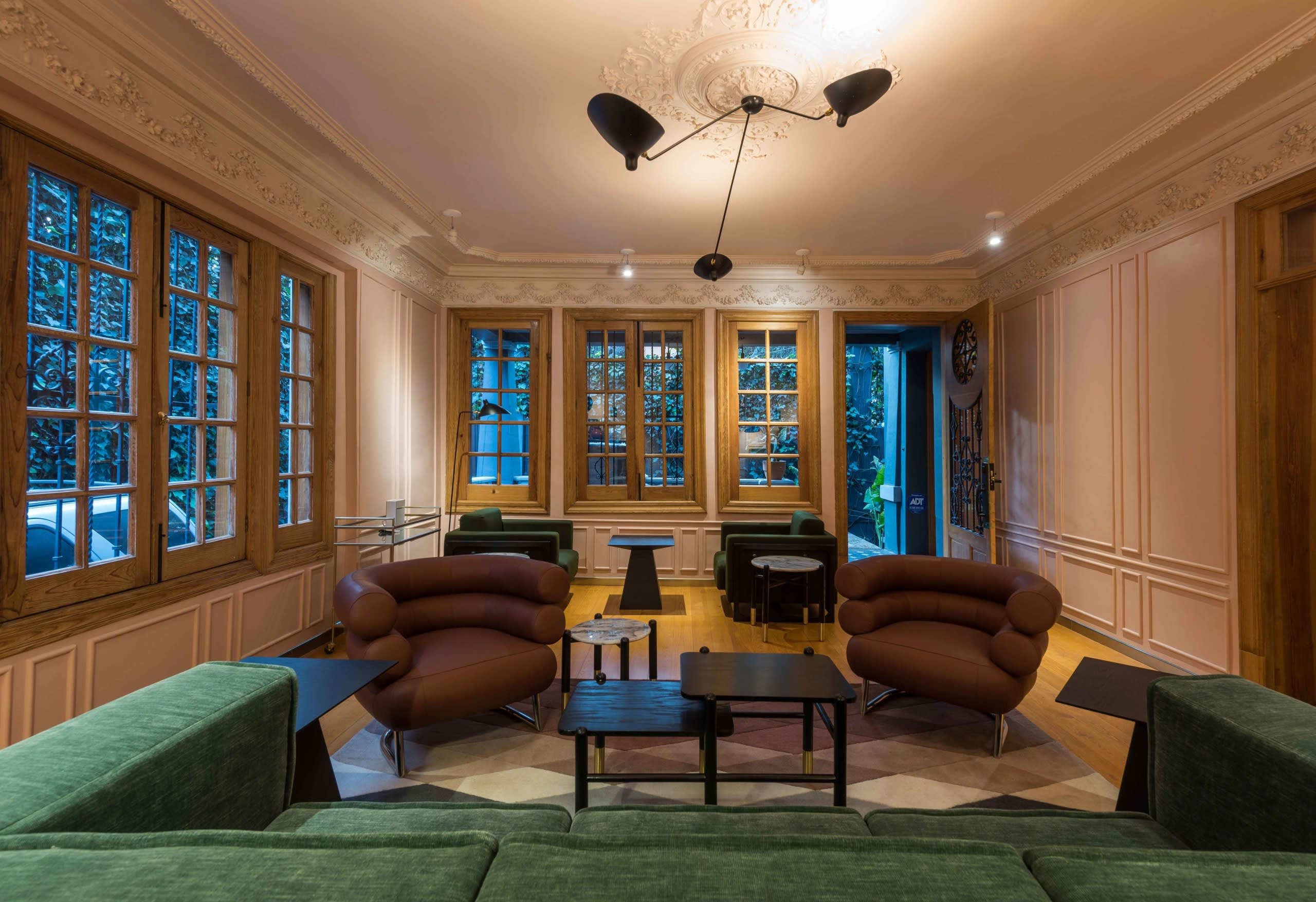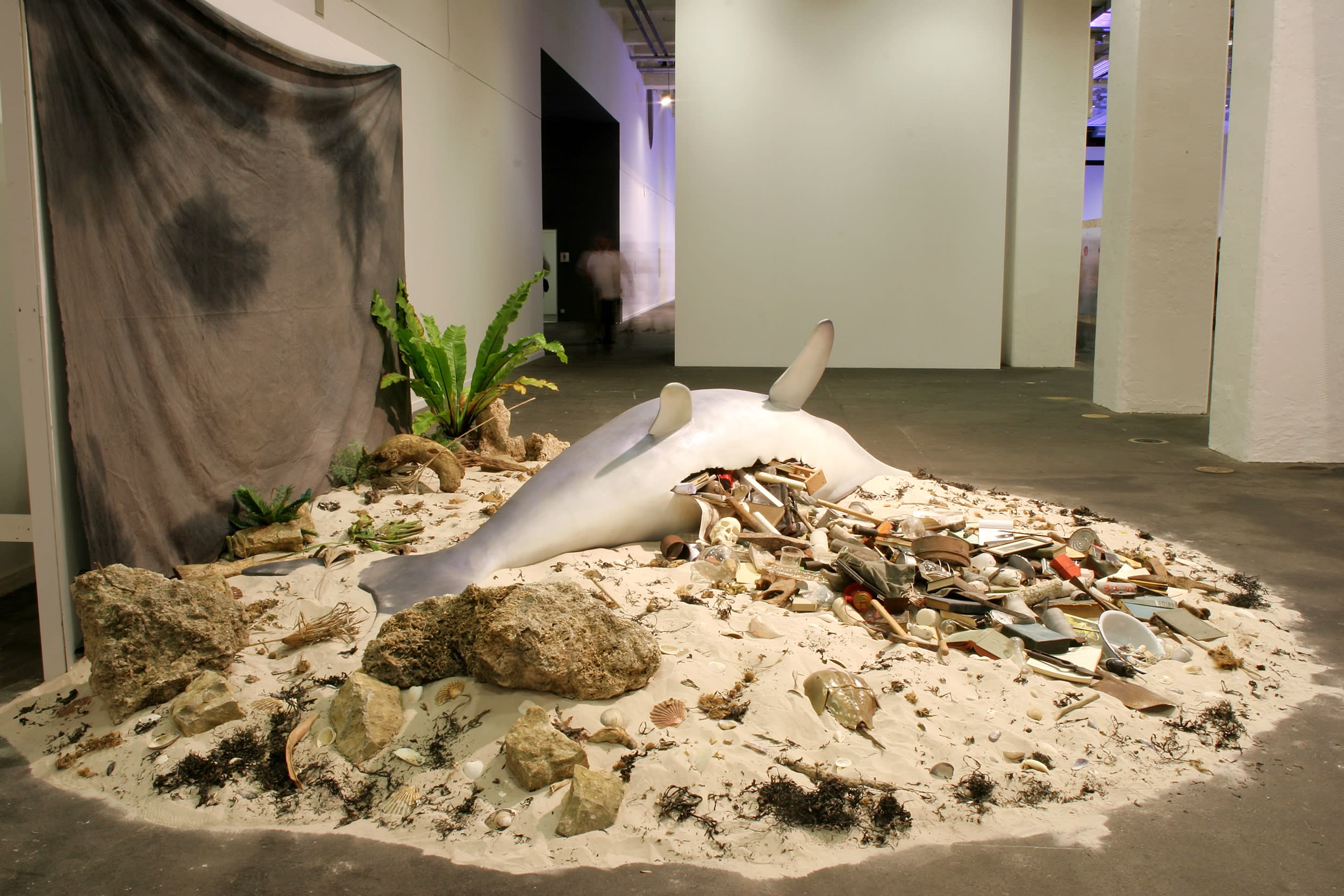A SERIES OF PANDEMIC-CAUSED CLOSURES OF MEXICO CITY ART SPACES HAS DONE NOTHING TO SLOW ITS CREATIVE GROWTH WITH UNFAZED TALENTS OPENING NEW VENTURES, LAUNCHING TRAVELING ART FAIRS AND TAPPING INTO THE DEEP WELL OF ARTISTRY IN THE MEXICAN CAPITAL AND BEYOND.
While the pandemic forced many art spaces to adapt or, unfortunately for some, to close, the creative scene in Mexico City has continued to thrive. In the face of waves of limited visitor capacities and shortened opening hours as part of new safety regulations and budgets cuts at publicly funded Mexican institutions, gallerists, curators, directors and programmers, responded with resilience by embarking on new collaborations and opening new venues.
After Parque Galería became defunct, its former director Mauricio Cadena inaugurated Llano last November in La Laguna, a repurposed textile factory in the city’s Colonia Doctores neighborhood that houses many other creative projects. Galeria Mascota has partnered with Anuar Maauad to open a second location at the site of the former Casa Maauad artist-run residency program in Colonia San Rafael. In an Art Deco building in Roma Sur, Fátima González and Alejandro Jassan founded art gallery Campeche and in Juárez, Mau Galguera and María García Sainz opened Pequod Co.
The last year has also expanded the Mexican art world’s focus beyond its capital. For the most recent iteration of Zona Maco, the largest art fair platform in Latin America, the organizers decentralized the fair from its usual home at the Centro Citibanamex convention center. Instead, they invited Mexico City-based galleries to host other Mexican galleries from throughout the country. The approach highlighted existing dialogues taking place across Mexico’s 32 states. Material, an art fair that often features new contemporary voices with a strong performance and publishing component, postponed their 2020 fair in Mexico City and will be inaugurating a new model this fall. Launching its inaugural edition on October 28 at Guadalajara’s Cerámica Suro, annual traveling fair Estación Material will take place in a different Mexican city each iteration, presenting an invited lineup of galleries and projects based in Mexico. For those planning to visit, these stops are must-sees.

IGNACIA GUEST HOUSE IN MEXICO CITY. PHOTOGRAPHY BY JAIME NAVARRO.
Where to Stay
Ignacia Guest House
Located on a quiet, tree-lined street in Colonia Roma Norte, Ignacia Guest House was built in 1913 and includes five suites that each boast a different color scheme—blue, pink, green, yellow and an all-black main suite. Architecturally, the building blends the traditional restored architecture, preserved ceilings and floors and a new modernist extension. Guests can enjoy the citrus-tree garden and dine at the restaurant. Its name is an homage to the housekeeper for the private casona (estate) for over seventy years, and dedications are found in block-print portraits of her in several alcoves.
Quetzalcoatl Nest
With curving forms, sloping hallways, uneven floors and brilliant colors, Quetzalcoatl Nest is the Surrealist realization of Mexican architect Javier Senosiain’s organic designs, offered up as an Airbnb guest house. Inspired by an Aztec serpent god, the snake-shaped structure can host ten guests inside of its “belly” apartments. With a design and colors drawn directly from the surrounding topography, the property also boasts a sprawling garden, natural caves and a lake.

“COLECCIÓN JUMEX: TEMPERATURA AMBIENTE,” CURATED BY THE ARTIST SOFÍA TÁBOAS. PHOTOGRAPHY COURTESY OF MUSEO JUMEX.
What to See
Museo Jumex
Founded in 2013 by Eugenio López Alonso, heir to the Grupo Jumex fruit juice empire, the Museo Jumex houses the private art collection he began building in the 1990s and is thought to be the largest in Latin America. It includes conceptual art from the 1960s, as well as significant works by Mexican and international artists of López’s generation. The museum is the first building in Latin America designed by British architect Sir David Chipperfield, located just north of the city’s upscale Colonia Polanco and neighbors Carlos Slim’s Museo Soumaya. Through September 30, visitors are greeted in the plaza by Gonzalo Lebrija’s monumental 2020 sculpture Breve historia del tiempo (A Short History of Time) in which a car stands suspended on its nose, seemingly defying gravity This fall, the museum is opening a pair of linked exhibitions on October 7—a solo presentation by Mexican artist Sofía Táboas and a collection show that she will curate.
Casa Pedregal
The eruption of the Xitle volcano some 1,600 years ago shaped the harsh and rocky landscapes in the Colonias of Coyoacán and Jardines del Pedregal and subsequently inspired a generation of 20th-century artists and architects. Built between 1947 and 1950, Casa Pedregal (formerly known as Casa Prieto López) is the largest private residence designed by the celebrated modernist Luis Barragán. Purchased in 2013 with proceeds from selling off his contemporary art collection, César Cervantes enlisted Jorge Covarrubias to lead a restoration effort that took 20 months and relied on the work of hundreds of experts. While Casa Pedregal is Cervantes’s main residence, the house is open to guided tours where visitors can learn about its history and experience firsthand Barragán’s acute understanding of light and color through its pink facade, pastel-colored interiors and perforated doors that dapple sunstreams.
Anahuacalli Museum
While Diego Rivera is largely celebrated for his work as a muralist and painter, he was also an avid collector of pre-Hispanic art. Completed after Rivera’s death by architects Juan O’Gorman, Heriberto Pagelson and Rivera’s daughter, Ruth Rivera Marín, the Anahuacalli Museum houses 2,000 of that 45,000-work collection. With design direction from Rivera that recognizes Teotihuacan culture, the Anahuacalli is a pyramid of black volcanic stone, which incorporates architectural symbolism to serve as a “sacred receptacle” with a connection to the underworld. Under the current curatorship of Karla Niño, the Anahuacalli’s display follows Rivera’s dedication to connecting ancient cultures with evolving contemporary practices to create what he called a “Ciudad de las Artes” (City of Arts). Alongside the permanent collection are works by Rivera and a program of temporary commissions by an international roster of artists, such as Sarah Lucas.
Where to Eat
Expendio de Maiz
Located on a bustling street in Colonia Roma Norte, Expendio de Maíz is all kitchen. While there are rows of comfortable benches outside for diners, the entirety of the interior is devoted to masa. The tortilleria’s design by Ludwig Godefroy Architecture harkens back to pre-Hispanic architecture, with references to the Guachimontones pyramids of Teuchitlan as well as the old baths of Nezahualcoyotl in Texcoco. Made largely of volcanic stone, the architecture blends seamlessly with the black stone metates that are used to grind corn for masa. Whereas most tortillas in Mexico City are made from the industrial corn flour, Jesús Salas Tornés, chef and owner of Expendio de Maíz, insists on nixtamalization on-site. This traditional masa is the heart of the restaurant where there is no set menu; the only daily guarantee is that every dish will contain it in some form. Guests also do not order food, although they can inform the staff if they are vegetarian. Instead, the kitchen brings out individual small plates until the diners say to stop. In this splendidly delicious and surprising format, dishes have included a confit pork taco with salsa verde, papaya and purslane; a suadero gordita bathed in adobo; and an eggplant dip with portobello and turnip greens on a tortilla.
Maximo Bistrot
Maximo Bistrot was founded in 2014 by Eduardo and Gabriela García as a platform for experimenting with a range of cooking techniques using local ingredients. Among other positions, Eduardo cooked in chef Enrique Olvera’s Pujol, a fine-dining establishment that for some years has been internationally ranked as the city’s best restaurant. Over the past seven years, Maximo Bistrot has amassed a local following and been recognized as one of Latin America’s “50 Best Restaurants” and recently moved into a new home in Colonia Roma Norte with a light-flooded open plan. Changed daily, the menu offers the quality with a more casual approach and setting. Recent dishes include yellowfin tuna sashimi; chicatana(ant) guacachile with avocado puree, soy and ginger vinaigrette; “Zarandeado” Strip bass; and Scallop ceviche “a la Mexicana.”
What to Explore: Oaxaca City
MASA Galeria
Just over an hour flight from Mexico City is Oaxaca City, a place renowned for its food, textiles and ceramics. MASA, a nomadic design gallery whose projects blur the boundaries between art and collectible design have built a following for their annual exhibition series in architecturally unique homes in Mexico City. Founded by Héctor Esrawe, Age Salajõe and Brian Thoreen, along with Isaac Bissu and Roberto Diaz in 2019, the creative space is launching a program in Oaxaca City this fall to run from October 21 through December 15. Local curators are organizing a gallery week to coincide with this. Curated by Mexico City-based writer Su Wu, “Elementos Vitales: Ana Mendieta in Oaxaca” honors the work of the late Cuban artist Ana Mendieta, marking the first time that five of her celebrated film works will be presented in the state of Oaxaca where they were made, including the first from her “Silueta’ series, filmed at the Yagul archaeological site in 1974. Throughout the 1970s, Mendieta made several trips to Mexico to perform a practice that she called “voluntary submersion” in which she embedded her body into the natural waters and earth. While the landscape covered Mendieta’s imprint over time, the films offer a documentation of this intimate trace. To accompany the screenings, Wu invited five contemporary artists and designers—Pia Camil, Frida Escobedo, EWE, Adeline de Monseignat, and Solange Pessoa—to respond to Mendieta’s films and create site-specific seats for viewing. In many instances the furniture objects incorporate materials from the same regions that appear in the films and can physically connect viewers with the earth objects that Mendieta sculpted against her body.
HacerNoche
HacerNoche operates as many things but, above all, it is an exhibition platform conceived by three friends, Francisco Berzunza, Paola Plaza and Darío Yazbek, in 2017. Not formally a biennale, but certainly on the scale of one, its upcoming iteration enlists curator Elvira Dyangani Ose (recently named as the next director of Barcelona’s MACBA) to oversee it. “HacerNoche: Promised Land” will open to the public in spring 2022 at sixteen venues and will include two large group exhibitions at the Museum of Cultures of Oaxaca and the Centro de las Artes San Agustín. The exhibition series explores the performativity of the fable, proposed around what scholar Donna Haraway calls “speculative fabrications,” and what curator Elvira Dyangani Ose explains “are based on the need to generate interpretations, narratives or fables that offer perspectives of the possible.”


